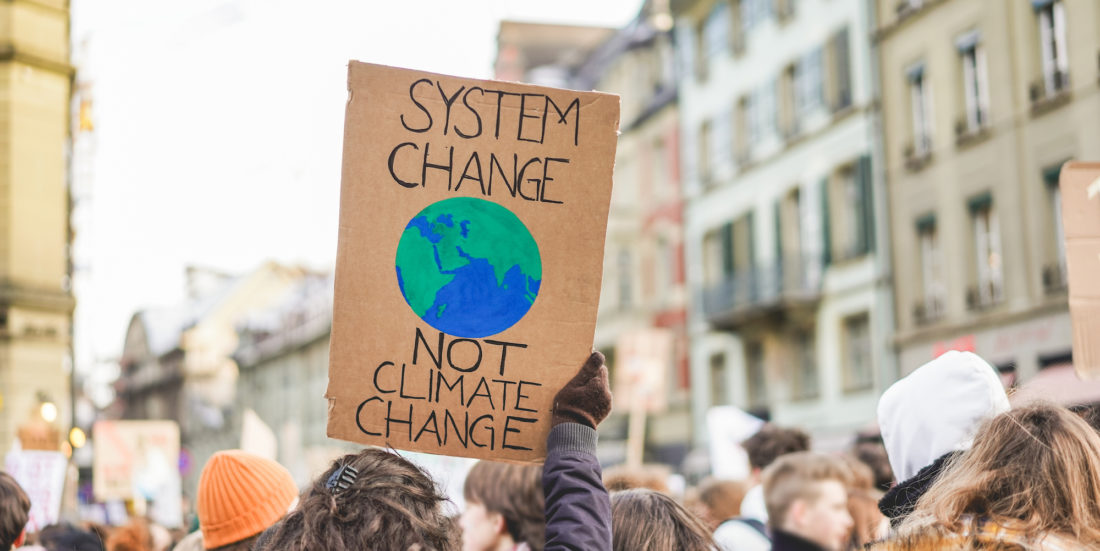Is green growth possible?
Increases in economic growth contribute to one-for-one increases in carbon emissions. Energy system decarbonization and economic productivity gains are the most effective carbon emissions mitigation mechanisms for sustainable economic development.
Economic growth is the aim of many policies. Still, economic growth is also the ultimate cause of pollution and climate change. A growing consensus of activists and scientists calls for ending economic growth and even “de-growth” in rich countries – pointing to the urgent need to protect nature and preserve resources for future generations.
All economic activity requires energy, and in our modern world, most of the power comes from fossil fuels which cause carbon emissions.
Think tanks and industry associations suggest that we need to pursue “green growth.” Yet what is the empirical evidence for the emissions-increasing effect of economic growth? Is it possible to have green growth, meaning economic growth that does not increase but reduces greenhouse gas emissions?
Many studies have looked at the historical data for carbon emissions and economic activity, as measured by the gross domestic product (GDP). Researchers have identified a wide range of relationships, looking at various sets of countries and periods. While some research suggests that economic growth leads to rapid increases in carbon emissions, other studies have found a modest increase or even a decrease.
Economic growth increases carbon emissions
We have assembled and analyzed the largest dataset of countries’ carbon emissions and underlying energy and economic variables. Our statistical analysis ascertained that economic growth increases carbon emissions.
Every percent growth raises emissions by a percent. We could gain this insight only by identifying other factors that also affect the rise in emissions. These factors provide us with the levers we need to halt global warming.
All economic activity requires energy, and in our modern world, most of the power comes from fossil fuels which cause carbon emissions. Hence, it is not surprising that more economic activity leads to higher carbon emissions. Not all economic activity is equally energy-gorging, however, and not all energy sources contribute the same amount of carbon emissions.

Economic growth almost always isn’t green, unless you count greenbacks. But since economic growth nearly always requires energy, shifting away from fossil fuels can set the stage for greener growth. Photo: Colourbox
How can previous research offer such a divergence of findings regarding the same underlying relationship? Most studies looked at subsets of the data we used. They treated economic growth as the only factor determining carbon emissions. In our study, we identified several factors which have independently influenced countries’ carbon emissions. The most important of these are economic productivity, the mix of energy sources, industry’s share of the GDP, and electricity.
Some countries shifted to renewable energy
We found that during periods of economic growth, some countries increased their share of coal in the energy mix and thus increased their carbon emissions even faster. Other countries, meanwhile, shifted away from coal to gas or away from fossil fuels to renewable energy sources and therefore decreased their carbon emissions.
Some countries turned to electricity and reduced their emissions. In contrast, others continued to use fossil fuels, and their emissions remained high.
Scientists have long debated whether carbon emissions reductions and economic growth can co-exist. The developments of the last decade show impressively that the answer is: Yes.
New Zealand, Sweden, and the United Kingdom have achieved this feat, amongst others. It requires, however, that the driving factors contributing to reduced carbon emissions rise fast enough to offset the upward pressure caused by economic growth.
Services instead of industrial production
New renewable energy sources need to compensate for the increase in the energy demand because of higher economic growth and replace some coal or gas fueling the economic activity. Or new and more profitable economic activity replaces previous, more polluting one, such as business services in the UK replaced industrial production.
De-growth will reduce emissions but may rob us of the means to invest in decarbonization.
The faster a country grows, the more difficult it is to achieve this balance. This reality is one reason why no emerging economy has achieved emissions reductions while continuing its pace of economic growth. Green growth is possible but requires strong climate policies. De-growth will reduce emissions but may rob us of the means to invest in decarbonization.
It is essential to change the economic structure of development activity towards a service economy and shift the energy supply toward renewable sources and nuclear power. Doing so can reduce the harmfulness of economic development.
Basing development on coal and oil and changing industrial structure afterward is harmful to the environment and economically wasteful and politically challenging. It is wiser to change the sequence: Clean up first, and then invest in development.
Reference: Ranran Wang, Valentina Assenova, Edgar Hertwich (2021) “Energy system decarbonization, and productivity gains reduced the coupling of CO2 emissions and economic growth in 73 countries between 1970-2016.” One Earth (Cell Press). https://doi.org/10.1016/j.oneear.2021.10.010
A version of this opinion piece was previously published in Norwegian, in Dagens Næringlsiv.





